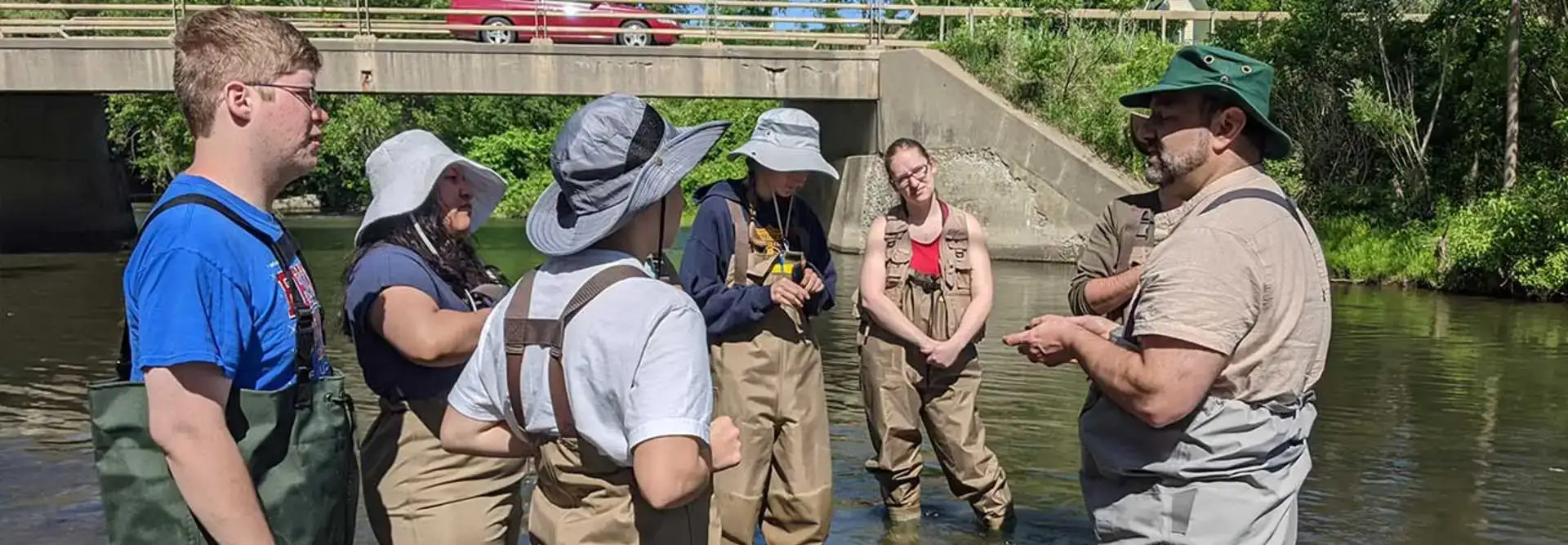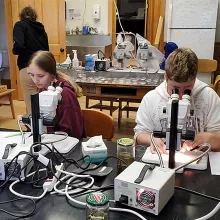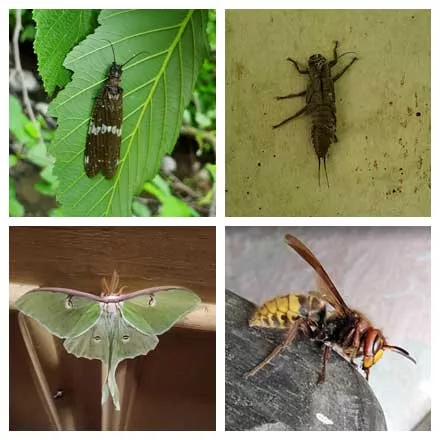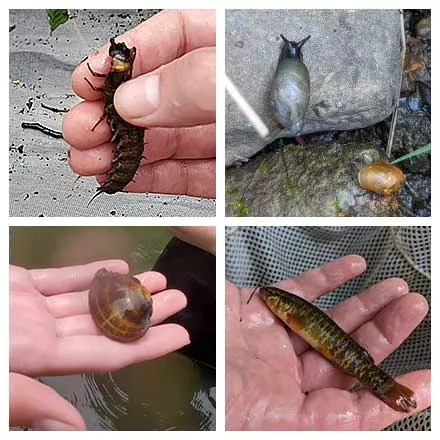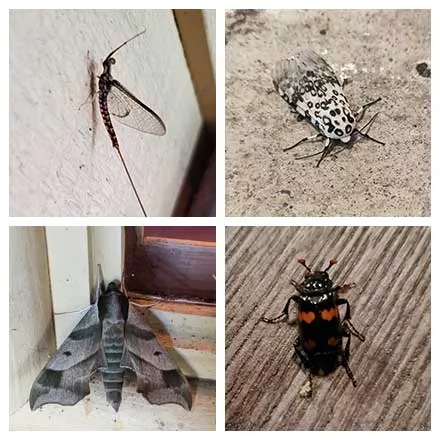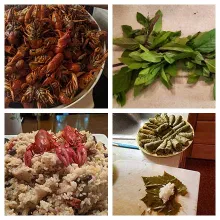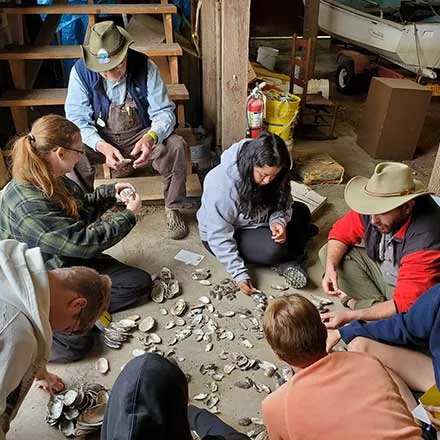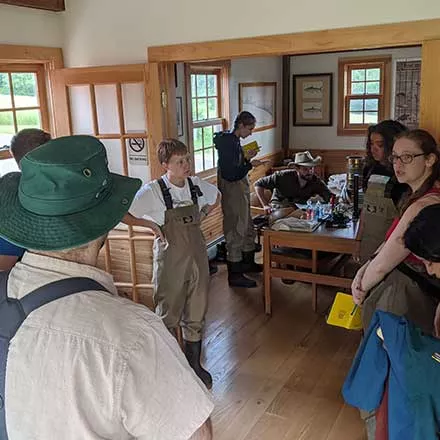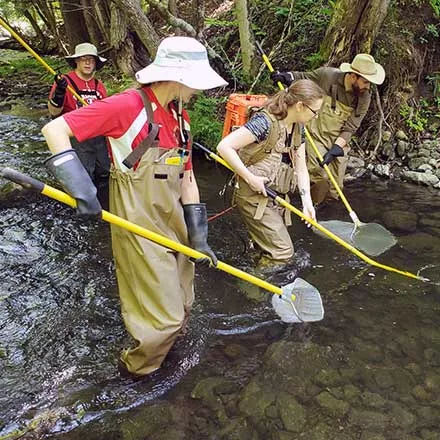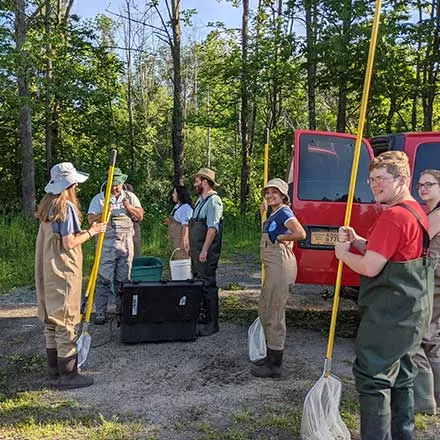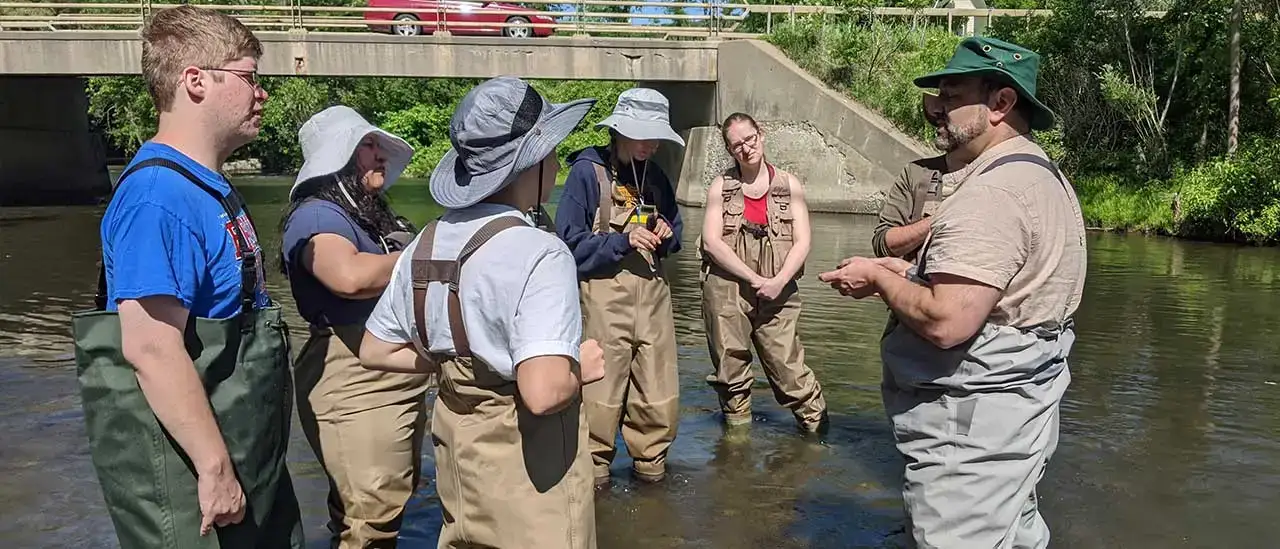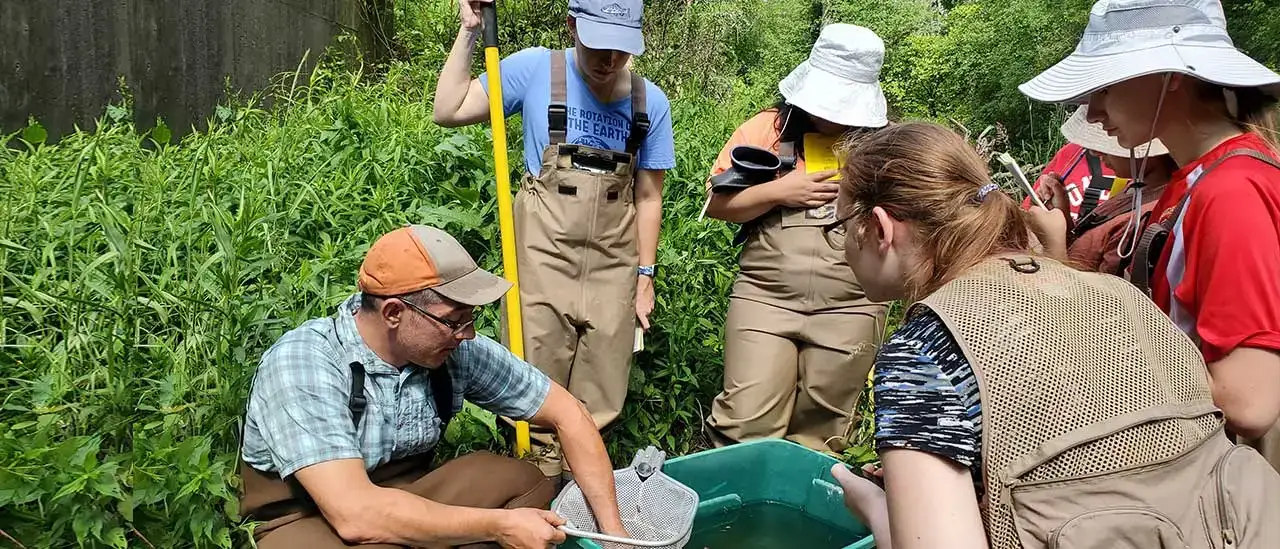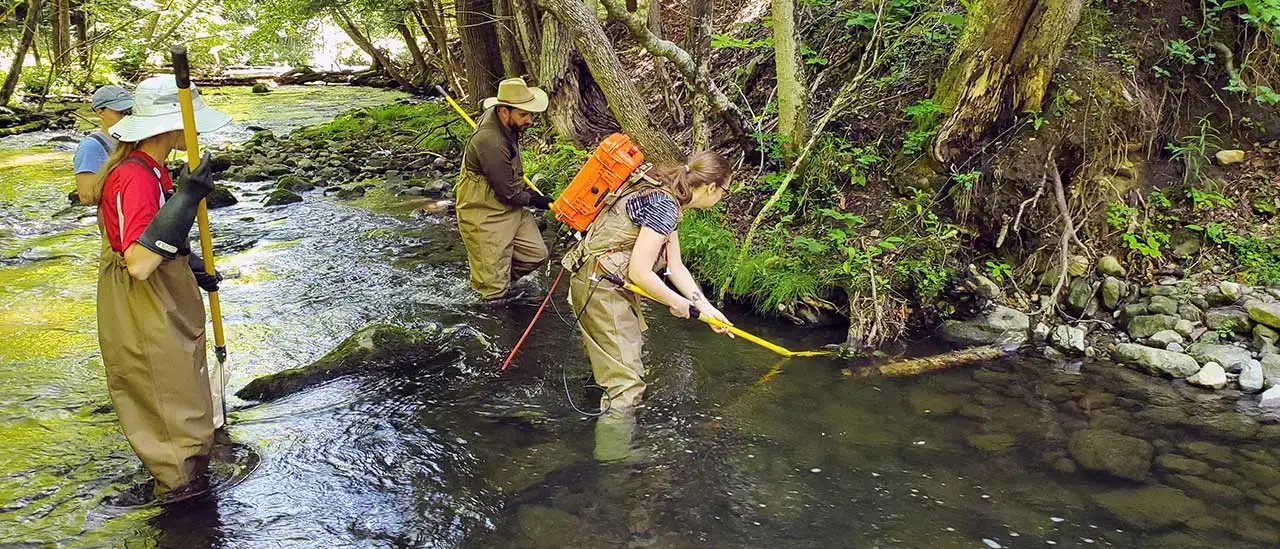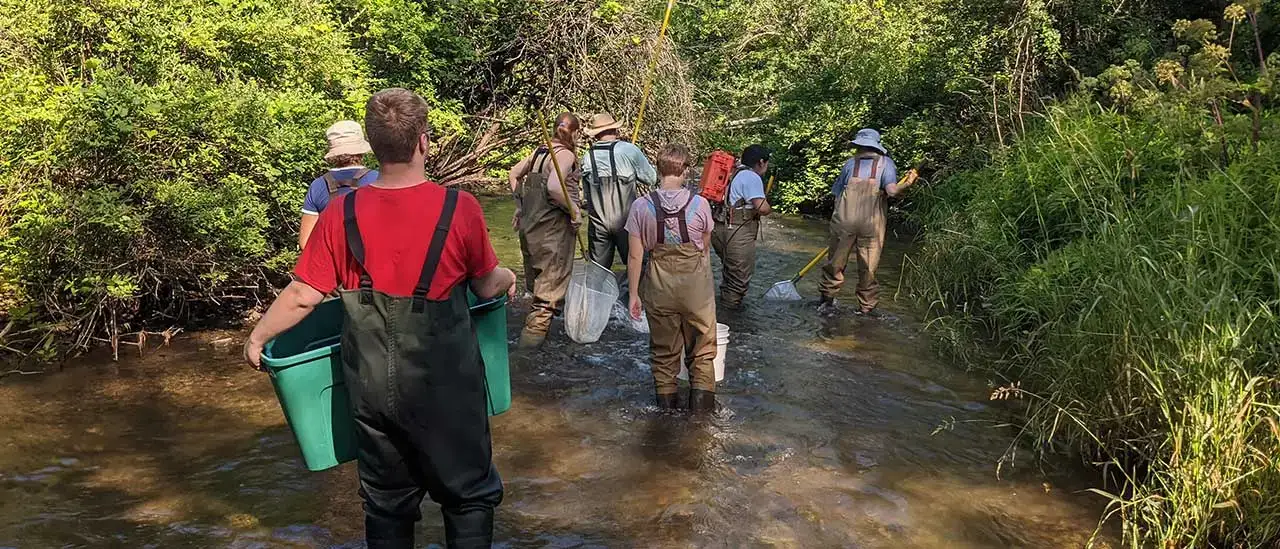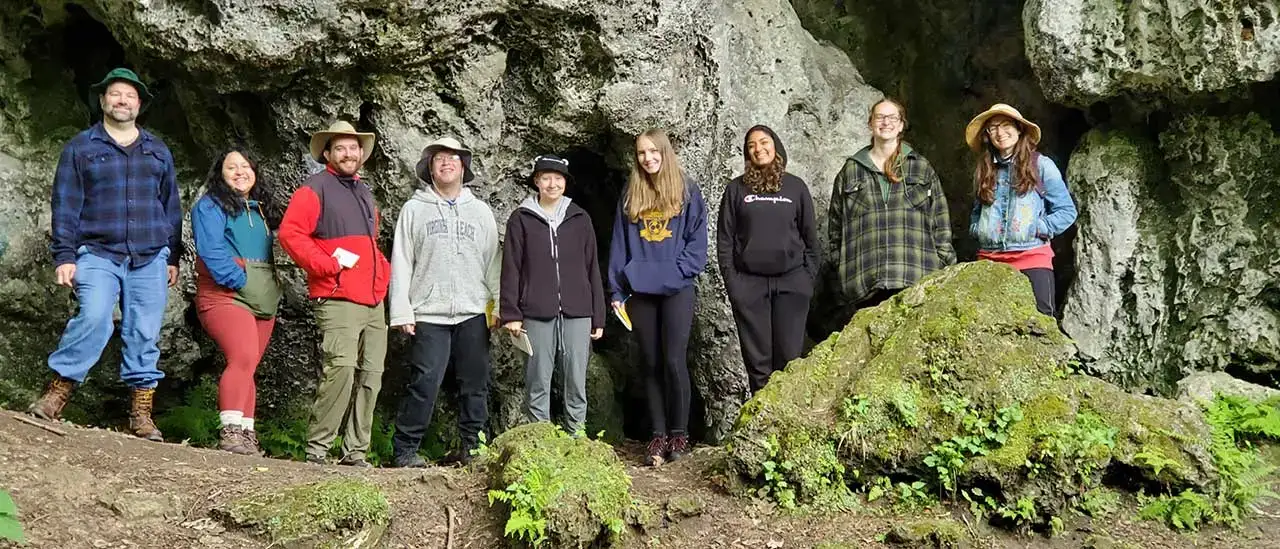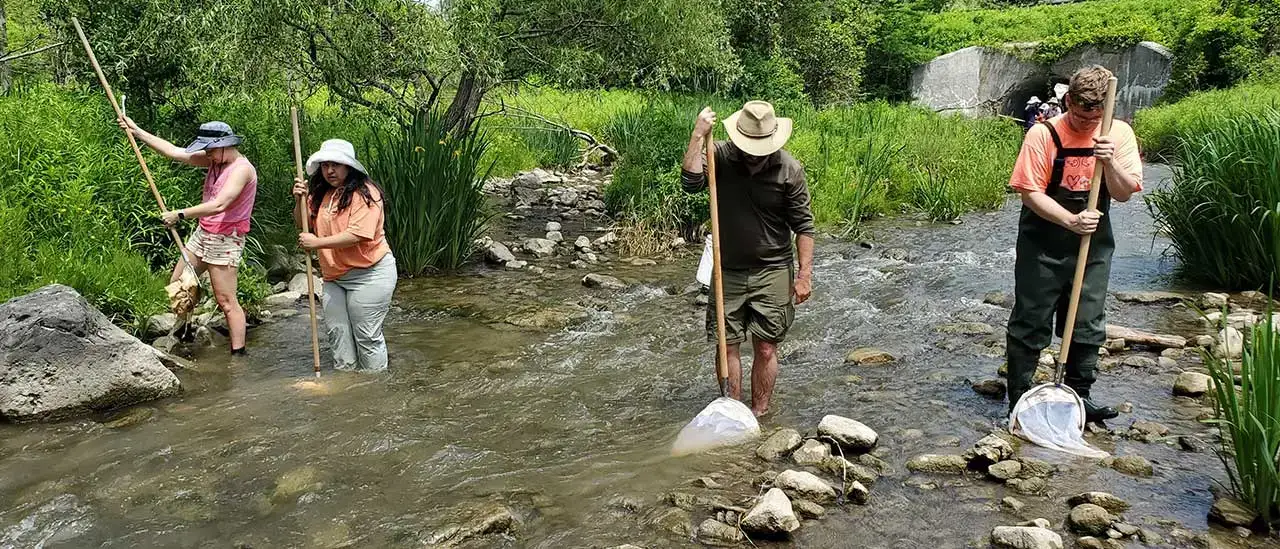Six students in Dr. Jeff Heilveil's BIOL 285: NY Stream Biota: Identification and Ecology class spent two weeks of their summer break wading in local streams and rivers and getting up close and personal with insects of the region.
The intensive, 16-day field experience let students learn first-hand about the ecology of streams and rivers, helping them see the vast diversity of insects in New York, as well as how human actions affect aquatic systems. They learned to identify the organisms (algae, insects, fish, etc.), used different types of gear and were introduced to questions and problems in the field.
“Perhaps the best (and most educational) part of the class is that students design and execute an individual research project during the class,” Heilveil explained. “At the end of the course, students get to present their research projects by giving a scientific-meeting-style research talk.”
Student projects this year compared water chemistry above and below beaver dams, looked at insect community changes as you move downstream in rivers, examined whether there were more zooplankton (microscopic animals) attached to rocks or carried in the current, and more.
They also got to hear from numerous content experts who work in the field locally and across the United States. They had a workshop on fishes with Assistant Professor of Biology Dr. Daniel Stich, a day working on pearly mussels with Biology lecturer Paul Lord, and a geomorphology workshop with Associate Professor of Geomorphology and Geology Dr. Leslie Hasbargen. They also got to hear from several successful SUNY Oneonta alumni, including Madeline Genco (an environmental consultant in Ohio), Jennifer Piacente (a bio assessor for the state of Florida), and Dr. Matthew Lundquist (a professor at Marymount Manhattan College in NYC).
An “invasive species dinner” invited students remove rusty crayfish from some of the local streams to cook and eat them alongside other foraged items such as dolma made with locally collected grape leaves and tea made with feral mint.
Abigail Thorsland, a senior biology major with a concentration in pre-pharmacy from Oneonta, NY, said her favorite part about the field course was learning more about stream ecology and using bio assessment equipment in the field.
“While I am not going into an ecology profession, the course taught me skills that I’ve already used since I’ve gotten home from camp, such as insect and fish identification,” Thorsland said. “I would recommend the course to any students, even if it is outside of their primary area of study. It was a lot of hard work but a lot of fun
